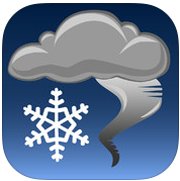
There are several ways to report weather to NWS Pittsburgh. Below are our contact methods and the types of information we need. Please include the location of the weather event, such as "5 miles northwest of Pittsburgh." You may indicate if you're a trained spotter, ham radio operator, law enforcement, or other affiliation.
Call 412-262-1988
Web-based reporting form
Special form for ice conditions

@NWSPittsburgh

@NWSPittsburgh
PBZ-Skywarn@noaa.gov

Precipitation measurements

Mobile weather reporting
Tornado: A violently rotating column of air extending from a thunderstorm cloud to the ground. The Enhanced Fujita Tornado Intensity Scale is used to categorize tornadoes
Funnel Cloud: A condensation funnel extending from the base of a towering cumulus or cumulonimbus, associated with a rotating column of air that is not in contact with the ground (and hence different from a tornado). A condensation funnel is a tornado, not a funnel cloud, if either a) it is in contact with the ground or b) a debris cloud or dust whirl is visible beneath it.
What to Report:
What kind of flooding was observed?
What size hail did you see?
Click here for a printable hail size chart.

Any hail size at or above a Quarter (1.00 inches) is severe thunderstorm criteria:
What kind of damage did the wind cause?
We are generally interested in wind speeds of 40-50 mph or higher. Here is some info on how to estimate wind speeds:
We are mainly interested in visibility reports of a half mile or less.